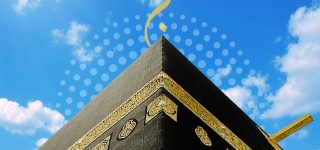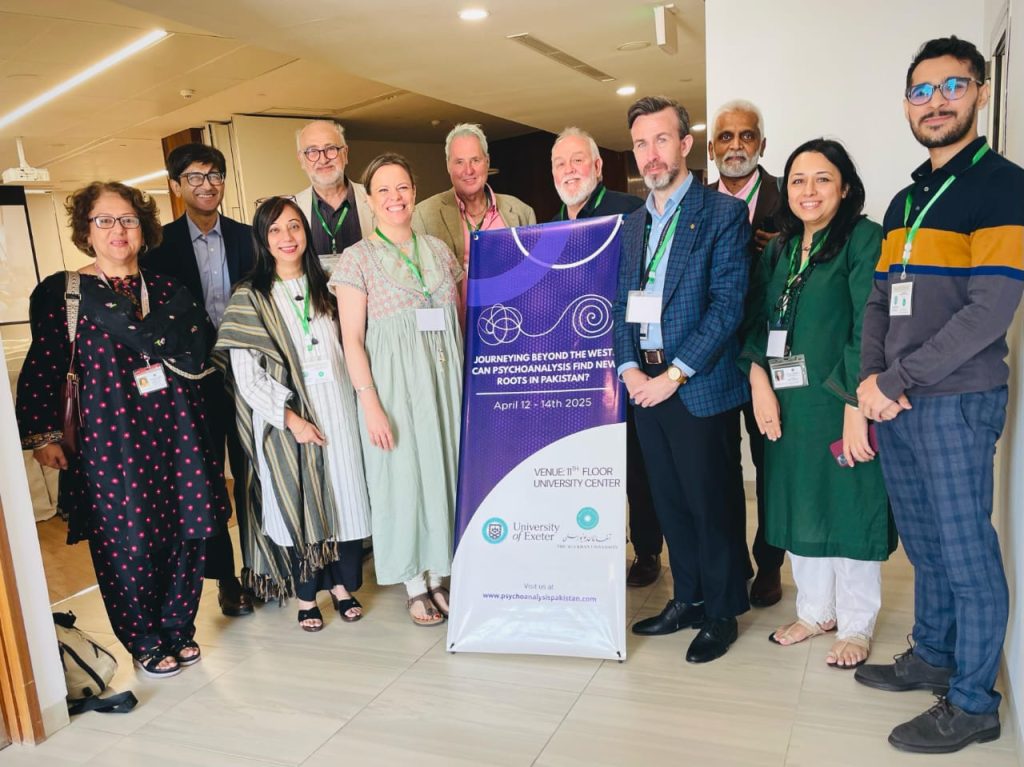Two -and-a-half months after the latest avatar of a long-existent Islamist army, the Islamic State (formerly Islamic State of Iraq and Syria), cut into Iraq, its ranks swelled to some 30,000 fighters in Iraq and 50,000 in Syria. It has entrenched itself in Mosul, Tikrit, Fallujah and Ramadi in northern Iraq, captured the Baiji oilfield, overran and lost the Mosul dam, and has been generally murdering and pillaging on a scale that has not been seen since Pope Innocent III’s 20-year-long crusade against the ‘heretical’ Cathars of southern France in 1209 AD.
One man could have broken the IS long before it went berserk — US President Barack Obama. Until almost up to the minute that the IS beheaded its second American news reporter, Steven Sotloff, (allegedly on 2 September), the most powerful man in the world was dithering.
There is a good reason why: because the IS cannot be defeated without denying it a safe haven in Syria — and this, as General Martin Dempsey, chairman of the US Joint Chiefs of Staff, pointed out on 21 August, cannot be done without the cooperation of the Syrian government. Placed in an uncomfortable position — Iran has long been the US government’s resident bugbear — Obama is unwilling to concede this, not only because it would be an admission of the monumental folly of his stance on Syria, but also because it would have him locking horns with Israel. Trying to keep it light, Gen Dempsey then told reporters on 24 August on his way to Afghanistan that he believed that the IS was primarily “a regional threatâ€.
Not that he is alone as a world leader confused by the IS: Israeli Prime Minister Binyamin Netanyahu started out by declaring on 22 June during the NBC’s Meet the Press programme in Washington, DC, “What you are seeing in the Middle East today in Iraq and Syria is the stark hatred between radical Shi’ites — in this case led by Iran — and radical Sunnis led by al Qaeda and ISIS and others. When your enemies are fighting each other, don’t strengthen either one of them. Weaken both. And I think by far the worst outcome that can come out of this is that one of these factions, Iran, would come out with nuclear weapon capability. That would be a tragic mistake — it would make everything else pale in comparison.â€
Netanyahu was reacting to a meeting a week earlier of US and Iranian negotiators during talks on Iran’s so-called nuclear programme: It clearly rattled him that the negotiators had met on the sidelines to discuss how Iran could possibly help to enfeeble the IS’ advance.
Obama got the message. So, he swallowed the huge insult of war reporter James Foley’s videotaped slaughter on 19 August. But for pronouncing Iraqi Kurdistan off-limits to the IS horde (which was, even then, advancing from its captured stronghold, Mosul, towards Erbil, the capital of Kurdistan region), and promising to protect the fistful of Americans in Baghdad, Obama doggedly refused to react to the IS’ fearsome cyberspace blizzard of bloody self-assertions: executions by gun and decapitation, updated on the minute on the global social media and its own website and mirror sites.
Gory end: An IS militant surveys the bodies of Iraqi securitymen executed in Salaheddin province, Photo: AFP
By 25 August, it became clear to even Obama’s advisers that Netanyahu’s focus wasn’t the IS: He was referencing the IS only to offset his bugbears, Iran and Hamas. That day, he coined an Internet meme on his Twitter page: “Hamas is ISIS. ISIS is Hamas.†As memes go, it was laughed out of town.
Obama, however, chose not to see that Netanyahu was changing his suit to fit the occasion: Hamas and the Salafists who comprise the ideological core of the IS heartily detest each other. Nonetheless, the US president stuck to his hands-off-the- IS policy. In a much-awaited press briefing at the White House on 28 August, he surprised the audience by using two unlikely words that would go on to define the parameters of US action against the IS in Iraq: “modest riskâ€.
This waffling was unusual on two counts: first, US presidents don’t do “opportunity that allows us with very modest risk to help the humanitarian situation†— these are loser’s words; second, of all the US presidents who have ever faced bad times — and which one hasn’t? — Obama seems beyond caring.
US policy, he said, would focus on “a broader regional strategy with an international coalition and partners to systematically degrade ISIS’ capacityâ€. To do this “over the long termâ€, he said he intended to “build a regional strategy… with other partners, and particularly Sunni partners, because part of the goal here is to make sure that Sunnis both in Syria and in Iraq feel as if they have got an investment in a government that actually functions, a government that can protect them, a government that makes sure that their families are safe from the barbaric acts that we have seen in ISISâ€.
Looked at one way, Obama wants merely to “degrade†the IS, not destroy it. In US military parlance, “To degrade IS to use non-lethal or temporary means to reduce the effectiveness or efficiency of adversary command and control systems and information collection efforts or means.†Obama wants to do this with the help of the very same, habitually untrustworthy Gulf sheikhdoms and the very same regime in Turkey that helped create, and continue to support, the Wahhabi- Salafi ultraconservative groups in Syria by pouring billions of dollars into the Free Syrian Army (FSA), whose ‘moderate’ cachet is, on the ground, virtually nonexistent. The FSA is armed with heavy weaponry, including hundreds of surface-to- air missiles that the US and the EU have specifically proscribed. Also, Obama pointedly made no mention of Iran.
In effect, he merely announced a continuation of the very policies that created the IS (the US administration decided in April to stick to ISIS despite the set-up having changed its name to IS to signify a larger footprint and ambition). He did not say a single word about how he intended to make them function differently in future.
Is this a sign of presidential imbalance, or resignation, or is there a more sinister explanation? Regrettably, everything points to the latter. There is strong, if not clinching, evidence that the IS — Abu Bakr al-Baghdadi, in particular — is the West’s creation. When IS rolled into Iraq, the US suddenly found itself at loggerheads with its greatest friend and ally in the region, Israel.
There is more myth than fact surrounding Baghdadi — who was until a couple of months ago casually called Abu Du’a and is now known to the IS cadre as Caliph Ibrahim. What are intriguing are his possible links with the West, which first surfaced on 15 July, when a Bahrain newspaper, the Gulf Daily News, quoting cursorily from an interview that former NSA agent Edward Snowden had allegedly given to IRNA, Iran’s Islamic Republic News Agency, said that Baghdadi had been forged by British and American intelligence agencies along with Israel’s Mossad to, as the paper put it, “create a terrorist outfit capable of centralising all extremist actions across the worldâ€. The strategy, named Hornet’s Nest, was to protect Israel from security threats by diverting attention to a freshly-minted regional enemy, IS. Baghdadi, the paper claimed, had been given intensive military training (along with courses in theology and speech) for a year by Mossad.
Most wanted: US Senator John McCain meets an FSA delegation, which includes Abu Bakr al-Baghdadi
Time magazine trashed the story within four days. “No mention of a Hornet’s Nest plot can be found in Snowden’s leaked trove of US intelligence documents,†it said, reminding readers that IRNA had been found to indulge in regime- inspired fantasy in the past, and disclosed that even the editor of Kayhan, Iran’s most influential newspaper, had found the story strange because Snowden had fled the country long before the plot had germinated.
But Time’s refutation is not conclusive. First, Snowden has not denied giving the interview. If it is a fabrication, then it is difficult to see why someone who gave up his country and his freedom to serve the cause of truth should now choose to become party to a lie. Second, Snowden blew the whistle and cut himself off from his sources on 10 June 2013. This was eight weeks after Baghdadi appointed himself the Emir of ISIS — and, therefore, up to 18 months after the plot, if one exists, was hatched.
Nonetheless, it is a mystery. WikiLeaks, always close to Snowden, clarified on its Twitter feed on 8 August, “ISIS, like other anti-Syrian militant groups may have received support from Israel, but released Snowden docs don’t show it.†Moreover, a trace-back shows that the Snowden ‘revelation’ wasn’t scooped by IRNA but appeared first on the website Algérie1.com on 11 July, four days before IRNA put it up as a word-for-word replication.
As it turns out, the Hornet’s Nest story is not necessary to prove Baghdadi’s connections with the West. When IS posted a video of Baghdadi addressing on 5 July a congregation from the pulpit of the grand mosque in Mosul, it set off a worldwide hunt to identify him. Photoanalysts found him very quickly, but in the most unexpected of places — talking animatedly to Senator John McCain at a secret meeting with five ‘moderate’ leaders of the FSA who had been specially assembled to meet him — at Idlib in Syria, on 27 May 2013. While this was before Baghdadi had started making a name for himself as an ultracon Islamist, it was, significantly enough, a month-and-a-half after he had changed the name of the Islamic State in Iraq (ISI) to the more ambitious Islamic State in Iraq and Syria (ISIS).
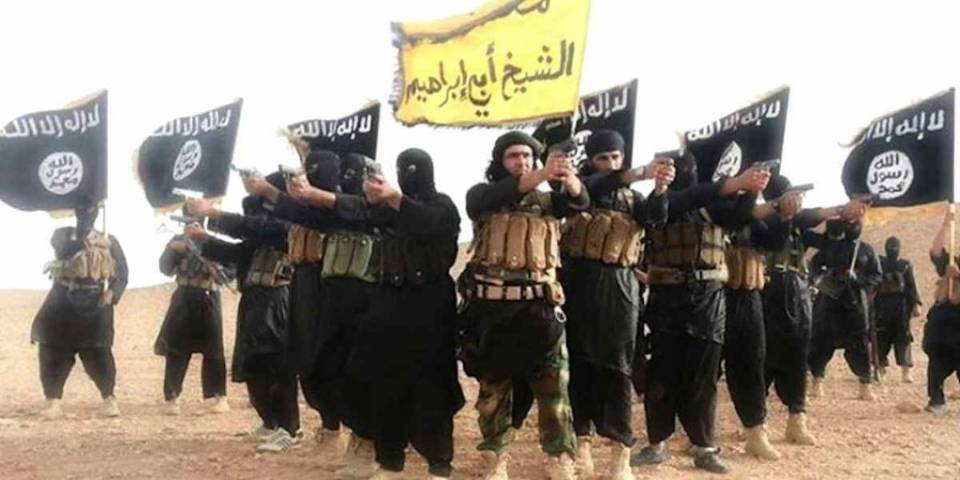
McCain’s visit to Syria had been organised by Salim Idris, self-styled ‘Brigadier General’ of the FSA (who eventually fled to the Gulf after the FSA lost traction), and the Syrian Emergency Task Force (SETF), an American not-for-profit organisation that is a passionate advocate for arming the ‘moderate’ FSA. One analysis has it that there was no room for McCain to have made an error because, on 27 May 2013, when he met Baghdadi, the latter had been on the US State Department’s list of Specially Designated Global Terrorists with a reward of $10 million on his head. Furthermore, the two met while Baghdadi was still known by his original name (under which the State Department had listed him as a planetary terrorist — Awwad Ibrahim Ali al-Badri).
Nor was Baghdadi the only wolf in sheep’s clothing at that meeting. Among the other ‘moderate’ Sunni leaders,SETF had also included Mohammed Nour and Ammar al Dadhiki aka Abu Ibrahim. Nour is the spokesman of Northern Storm, an offshoot of the brutal Jabhat al-Nusra, the Syrian and Lebanese branch of al Qaeda, whose brutality was a byword in Syria till put in the shade by IS. Dadhiki is one of its key members. Only days before Nour’s meeting with McCain, Northern Storm had kidnapped 11 Lebanese Shia pilgrims on their way to Iraq.
Show of strength : Bankrolled by Saudi Wahhabi fundamentalists and other conservative Gulf States, ISIS has grown into a monster of epic proportions
Did McCain know that the leaders he was meeting were not moderate Sunni rebels but some of the most murderous and bigoted terrorists in the world today? Probably not. But the same cannot be said of the organisation that took him there — the SETF. The SETF had worked closely with Idris to set up the McCain meeting, so it had to have known who was being invited to it. It also knew perfectly well that on the ground in Syria, no one was bothering to make the hairsplitting distinction between ‘good’ and ‘bad’ rebels that it was feeding to US Secretary of State John Kerry, McCain and hundreds of other policymakers in Washington. When, a fortnight after McCain’s visit, a terrorist leader named Abu Sakkar cut out the heart and lungs of a Syrian soldier and took a bite out of the latter for the benefit of global viewers, Idris belligerently defended his inclusion in the FSA and asked his BBC interviewer, Paul Wood: “Is the West asking me now to fight Abu Sakkar and force him out of the revolution?â€
Yet only two months later, the SETF’s then political director, Elizabeth O’Bagy, felt no compunction in writing in a massively influential op-ed piece in the Wall Street Journal that Kerry quoted to the US Congress: “Anyone who reads the paper or watches the news has been led to believe that a once peaceful, pro-democracy opposition has transformed over the past two years into a mob of violent extremists dominated by al Qaeda… This isn’t the case… Moderate opposition groups make up the majority of actual fighting forces, and they have recently been empowered by the influx of arms and money from Saudi Arabia and other allied countries, such as Jordan and France.â€
Why is the SETF willing to stop at nothing to destroy the Bashar al Assad regime in Syria? The answer again comes back to Israel. There is a close, but undisclosed, relationship between SETF and the American Israel Political Action Committee (AIPAC), Israel’s premier lobbying organisation within the US. Till it was ‘corrected’ in 2013, one of SETF’s email addresses used to be syriantaskforce.torahacademybr. org. The torahacademybr.org url belongs to the Torah Academy of Boca Raton, Florida, whose academic goals notably include “inspiring a love and commitment to Eretz Yisroelâ€.
The origins of its executive director, Mouaz Mustafa, are obscure, to say the least. His biodata on the SETFwebsite says that he emigrated from Syria to the US when he was 15, but the details of his working life show that he became an aide to Congressman Vic Snyder when he was only 19, the age at which most Americans finish high school. He then worked with Democratic senator Blanche Lincoln, till she lost her seat in 2010.
Show of strength : Bankrolled by Saudi Wahhabi fundamentalists and other conservative Gulf States, ISIS has grown into a monster of epic proportions
On 17 April 2011, possibly after a short visit to Cairo, he became the executive director of a newly formed lobbying group, the Libyan Council for North America. This was a month after the West attacked Libya. He “moved on†again in September 2011 to the newly constituted SETF (again as its executive director), only days after the fall of Tripoli. At that point he was only 25. One doesn’t have to be a Washington Beltway insider to know that he could not have done all this without very powerful, covert support.
Mustafa has spoken frequently at meetings of AIPAC, and is a regular contributor on the website of the Al Fikra Forum, which describes itself as an “online community that aims to generate ideas to support Arab democrats in their struggle with authoritarians and extremistsâ€. But going by its email address, it is an affiliate of the Washington Institute for Near East Policy (WINEP), a think-tank set up by AIPAC. Its home page sports a link to the Fikra Forum’s website.
Mustafa is a regular speaker and discussant at WINEP. On 22 July, WINEP released (and probably financed) a film titled Red Lines: Inside the Battle for Freedom in Syria, which portrays the lives of Mustafa and a female activist, Razan Shalab al-Sham. During the discussion that followed, Mustafa said: “Helping Iran to provide security in the region is the worst possible idea, because what happens then is that you make it possible for both Sunni and Shia extremists to develop deep roots in the region. What we need to do is to help the people, who don’t want to be ruled by the Iranians and don’t want to be ruled by the extremists, and they are there.†Netanyahu could not have put it better.
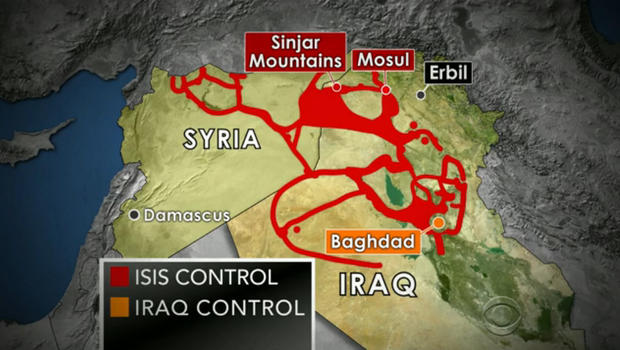
Israel is the only country in the world to whom it simply does not matter what happens to the rest of the Arab world so long as it somehow enhances its own security. In the mid-1990s, a consultant group formed under the aegis of the American Enterprise Institute submitted a plan for “furthering peace in the Middle East†to Netanyahu. Its key recommendations were for Israel to work for the destruction of Iraq, ‘roll up’ of Syria, and isolation of Hezbollah in south Lebanon prior to destroying it. The way in which a majority of the members of the group were inducted into the George W Bush administration and succeeded in bringing about the destruction of the Ba’athist and sternly secular, albeit tyrannical, regime of Saddam Hussein has been well documented elsewhere and need not detain us. It is the sequel that concerns us now.
Within two years of destroying Iraq, Israel realised that it had jumped from the frying pan into the fire. Whereas Hussein’s Iraq had been an impenetrable buffer between Iran and Lebanon, Maliki’s Iraq was an open chute for arms to flow from Iran to the Hezbollah. To Israel, this chute, which it called the ‘Shia crescent’, became an arrow pointed at its heart. As the Hezbollah grew ever more powerful, Israel panicked. In 2006, it attacked Lebanon and the Hezbollah in order to destroy the latter’s tunnels and arms, much as it did to the Hamas in Gaza last month.
But that operation proved a diplomatic and security disaster, for Hezbollah emerged from it even stronger than it had been before. Since then Israel has lived in mortal fear of the ‘Shia crescent’. Getting Iran to foreswear the development of nuclear weapons was no longer sufficient. The pipeline to the Hezbollah had to be cut. There were only two ways — destroy Iran or destroy Syria. Iran, however, was a far larger and more powerful country than Iraq and even Bush shied away from attacking it. There was no mass hysteria, moreover, such as had seized the American people after 9/11, to capitalise upon. But Syria was small enough to be ‘doable’.
So, in 2008, two gentlemen, Jeffrey Feltman, assistant secretary in the State Department and ardent Zionist, who had served two terms in Israel, and Prince Bandar bin Sultan, Saudi Arabia’s powerful ambassador to the US, concocted another plan. This one, called without a hint of irony ‘A plan for furthering peace in the Greater Middle East’, proposed breaking the ‘Shia crescent’ by creating a ‘Sunni crescent’ that would start in Turkey and end in Jordan. The stumbling block was Assad’s Ba’athist, secular and fumblingly authoritarian Syria. But 70 percent of Syrians are Sunnis. So three quarters of the plan, which eventually found its way onto the Internet in 2012, describes in chilling detail how to use religion, and for some strata economic discontent and pecuniary inducement, to rise against Assad. In 2011, when the Arab Spring began, 51 television and radio stations located in Saudi Arabia and the Gulf had been beaming Salafi and hate propaganda against Assad to the Syrian people for the previous two years.
Headhunters : The ISIS has taunted the US by beheading journalist James Foley
Israel came within a millimetre of achieving its goal after the gas attacks in the Ghouta suburb of Damascus in August last year. On 27 August, alongside the full text of Kerry’s speech committing the US to bombing Syria for crossing Obama’s red line on chemical weapons, the rightwing Times of Israel published two reports that detailed precisely how Israeli intelligence inputs had proved crucial in making up Washington’s mind. A third, more ominous, report gave details of how Netanyahu not only hoped that this would be a precursor for a US attack on Iran’s nuclear facilities, but also intended to use the precedent it would create to launch the attack on his own.
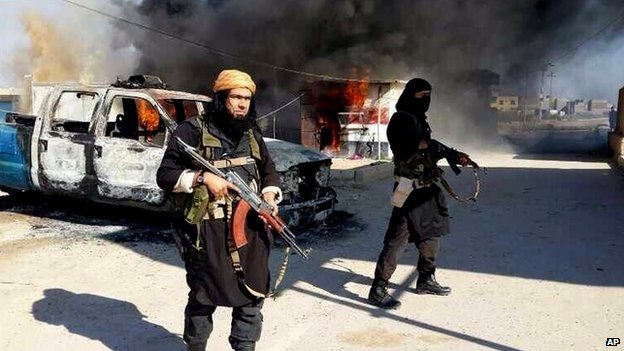
But contrary to the robust assertions of Kerry and Obama to the US Congress and the media, the US had substantial amounts of evidence in August that the Syrian Army had not used chemical weapons at Aleppo and Damascus in March and April 2013, and that not only the Jabhat al-Nusra but also the then nascent ISIS had the capacity to produce sarin. Faced with the prospect of being accused of again manufacturing evidence to start a war, both Cameron and Obama found ways of resiling from their commitment to bomb Syria. Israel therefore found itself robbed of ‘victory’ when it was already in its grasp.
Obama’s initial willingness to cooperate with Iran, and therefore by implication, with Syria, has thrown Netanyahu and his government into something close to panic. But its knee-jerk reactions are further endangering Israel’s security. Its invasion and six-week-long pigeon-shoot in the open-air prison called Gaza is a case in point. Netanyahu used the pretext furnished by the kidnapping and murder of three teenagers from the West Bank for launching his attack. But soon it became apparent that his real aim was to destroy Hamas root and branch and terrorise the unfortunate Gazans into never cooperating with it again.
But Hamas has stoutly denied that it kidnapped the teenagers. As for their murder, it is not only out of character for Hamas, which has regularly kidnapped Israelis only to exchange them for Palestinian prisoners, but also suicidal. On the other hand, IS has claimed over and over again that it killed the teenagers as a reprisal for Israel’s killing of three of its members last December when they were about to enter Israel, but Tel Aviv has ignored these claims. If IS is indeed partly Israel’s creation, then its reluctance would be understandable.
Like the invasion of Lebanon, Israel’s attack on Gaza is bound to backfire. It has not only isolated Israel in the international community to an extent that was unimaginable only a year ago, but is probably the trigger for Jabhat al-Nusra’s sudden seizure of the Syria-Israel border town of Quneitra. IS had already all but evicted Jabhat al-Nusra from northern Syria. Its shift to Syria’s southern border could signal a strategic decision by the leaders of al Qaeda to leave Syria and Iraq to IS and focus on Jordan and Israel.
If this shift of focus has not already happened, it is bound to happen in the future. For as Salafi preachers repeat endlessly, their ultimate goal is to free Jerusalem and open al Aqsa Mosque, the second holiest shrine in Sunni Islam, to all true Muslims.
Headhunters: The ISIS has taunted the US by behading journalist Steven Sotloff
So great is Israel’s panic that it does not realise that Ba’athist Syria is its last remaining bastion against the Wahhabi hordes. Once it falls, thousands of youth who consider themselves victims of their own governments and societies will flock to the banners of IS and Jabhat al-Nusra for the final assault on Jerusalem.
Once that happens, life in Israel, and much of the rest of the world (including Pakistan and India), will become truly “nasty, brutish, and shortâ€.
The article was published in Tehelka




